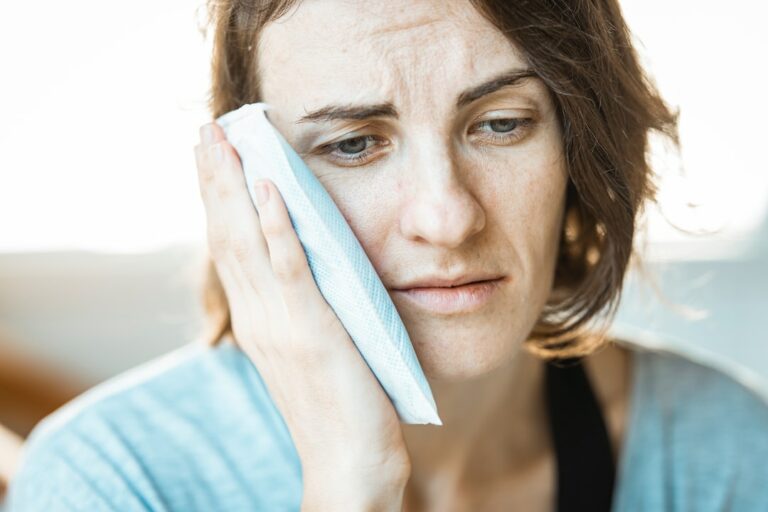Introduction
Definition of pain
Pain is a complex and subjective sensation that is experienced differently by each individual. It can be described as an unpleasant physical or emotional experience, often associated with tissue damage or potential harm. The definition of pain is not limited to just physical discomfort, but also includes psychological and social factors that contribute to the overall perception of pain. Understanding the nature of pain is crucial in the field of medicine, as it helps doctors diagnose and treat various conditions. By evaluating the location, intensity, and duration of pain, doctors can determine the underlying cause and develop appropriate treatment plans. With advancements in medical research and technology, doctors have a wide range of options to alleviate pain and improve the quality of life for their patients.
Common causes of pain
Pain can be caused by various factors, including injuries, medical conditions, and inflammation. Understanding the common causes of pain is essential in finding effective solutions. Injuries such as sprains, fractures, and muscle strains can lead to acute or chronic pain. Medical conditions like arthritis, fibromyalgia, and migraines can also cause significant discomfort. Inflammation, whether due to an infection or an autoimmune response, can result in localized or widespread pain. By identifying the underlying cause of pain, individuals can seek appropriate treatment and management strategies.
Importance of managing pain
Managing pain is of utmost importance for individuals seeking relief from discomfort and improving their overall well-being. Pain can have a significant impact on daily activities, productivity, and quality of life. It is essential to explore various approaches to pain management, including natural remedies, to find the best solution for each individual’s unique needs. One such natural remedy that has gained attention is herbal medicine. Herbal remedies have been used for centuries to alleviate pain and promote healing. They offer a holistic approach to pain management, addressing both the physical and emotional aspects of discomfort. Incorporating the best natural mercury detox into a pain management routine can provide additional benefits by supporting the body’s natural detoxification processes. By combining the power of herbal medicine and natural detoxification, individuals can take proactive steps towards managing pain and achieving optimal well-being.
Traditional Herbal Remedies
Overview of traditional herbal medicine
Traditional herbal medicine has been used for centuries to treat a wide range of ailments. It involves the use of natural remedies derived from plants and herbs. These remedies have been found to be effective in relieving pain and promoting overall wellness. One popular question that arises is whether there is an herb specifically for pain relief. Many studies have shown that certain herbs, such as turmeric and ginger, have anti-inflammatory properties that can help alleviate pain. Additionally, other herbs like chamomile and lavender have calming effects that can aid in relaxation and reduce discomfort. Overall, traditional herbal medicine provides a holistic approach to healing and offers a natural alternative to conventional medications.
Popular herbs for pain relief
There are several popular herbs that are known for their pain-relieving properties. These herbs have been used for centuries to alleviate various types of pain and discomfort. One such herb is turmeric, which contains a compound called curcumin that has been found to have anti-inflammatory and analgesic effects. Another popular herb is ginger, which has been used in traditional medicine to reduce pain and inflammation. Additionally, boswellia, also known as Indian frankincense, has been shown to have anti-inflammatory properties that can help relieve pain. Other herbs that are commonly used for pain relief include willow bark, devil’s claw, and white willow bark. These herbs can be taken in various forms, such as teas, capsules, or extracts, and can provide natural relief for those seeking alternatives to conventional pain medications.
Effectiveness of herbal remedies
Herbal remedies have been used for centuries to alleviate pain and discomfort. The effectiveness of these natural medicines for anxiety has been a topic of interest for many individuals seeking alternative treatments. Studies have shown that certain herbs can help reduce anxiety symptoms and promote a sense of calmness. For example, chamomile is known for its calming properties and can be brewed into a tea to help ease anxiety. Another herb, lavender, has been found to have a soothing effect on the nervous system and can be used in aromatherapy or applied topically as an oil. These natural remedies provide a holistic approach to managing anxiety and can be a valuable addition to a comprehensive treatment plan.
Scientific Research on Herbal Remedies

Current studies on herbal remedies for pain
There are several current studies on herbal remedies for pain that are being conducted. These studies aim to explore the effectiveness and safety of various herbs in alleviating pain. One of the key focus areas is identifying herbs that have anti-inflammatory properties, as inflammation is a common cause of pain. Another area of interest is investigating herbs that can target specific types of pain, such as neuropathic pain or musculoskeletal pain. Additionally, researchers are also examining the potential interactions between herbal remedies and conventional pain medications. By understanding the mechanisms of action and potential side effects of these herbs, healthcare professionals can provide evidence-based recommendations to patients seeking alternative pain management options.
Mechanisms of action
Mechanisms of action
Ashwagandha has been extensively studied for its potential pain-relieving properties. A review of several studies has shown that ashwagandha may help reduce pain by inhibiting the production of inflammatory compounds in the body. Additionally, ashwagandha has been found to have analgesic effects, meaning it can directly reduce pain sensations. These mechanisms of action suggest that ashwagandha may be an effective herb for pain relief.
Potential side effects and risks
When considering the use of herbs for pain relief, it is important to be aware of potential side effects and risks. While natural remedies can provide relief for many individuals, they may not be suitable for everyone. It is always recommended to consult with a healthcare professional before trying any new herbal remedies. Some common side effects of certain herbs include digestive issues, allergic reactions, and interactions with medications. Additionally, some herbs may have contraindications for certain medical conditions or during pregnancy. Therefore, it is crucial to do thorough research and seek professional advice to ensure the safety and effectiveness of using herbs for pain management.
Integration with Conventional Medicine
Collaboration between herbal medicine and conventional medicine
Collaboration between herbal medicine and conventional medicine is crucial in providing comprehensive and effective pain management. While herbal medicine has been used for centuries to alleviate pain, it is important to recognize that it should not replace conventional medicine but rather be used as a complementary approach. By combining the strengths of both herbal and conventional medicine, patients can benefit from a holistic and personalized treatment plan. The collaboration between these two approaches allows for a more integrative and multidimensional approach to pain management, addressing not only the symptoms but also the underlying causes. This collaboration also enables healthcare professionals to leverage the extensive knowledge and research available in both fields, ensuring evidence-based practices. With the integration of herbal medicine and conventional medicine, patients can have access to a wider range of treatment options, enhancing their overall well-being and quality of life.
Safety considerations
When it comes to safety considerations, it is important to be aware of the potential risks and interactions associated with using herbs for pain relief. While there are many natural remedies that can provide relief from pain, it is crucial to understand that not all herbs are safe for everyone. One important consideration is the use of antibacterial herbs. These herbs have natural antibacterial properties that can help fight off infections and promote healing. However, it is important to consult with a healthcare professional before incorporating antibacterial herbs into your pain management routine. They can provide guidance on the appropriate dosage, potential side effects, and any potential interactions with other medications you may be taking. By taking these safety considerations into account, you can ensure a safe and effective approach to managing pain with herbs.
Benefits of combining treatments
Combining treatments can provide numerous benefits for managing pain. One of the most effective ways to enhance pain relief is by incorporating herbal remedies into your treatment plan. Herbal remedies have been used for centuries to alleviate pain and promote healing. They offer a natural and holistic approach to pain management, without the potential side effects of pharmaceutical medications. By combining traditional medical treatments with herbal remedies, you can experience enhanced pain relief and improved overall well-being. Incorporating herbal remedies into your pain management plan can also help reduce reliance on prescription medications, providing a more sustainable and long-term solution for pain relief.
Personal Experiences and Testimonials
Individual stories of using herbal remedies for pain
Individual stories of using herbal remedies for pain can provide valuable insights and firsthand experiences. One such herb that has gained popularity for its pain-relieving properties is the king of herbs. Many individuals have reported significant pain reduction after using this herb. Its powerful anti-inflammatory and analgesic properties make it an effective natural remedy for various types of pain. The king of herbs has been used for centuries in traditional medicine and continues to be a popular choice among those seeking alternative pain relief. If you’re looking for a natural solution to alleviate pain, consider exploring the benefits of the king of herbs.
Success rates and challenges
Success rates and challenges of using herbs for pain management vary depending on the individual and the specific herb being used. While some people may experience significant relief from their pain symptoms with herbal remedies, others may find little to no improvement. Additionally, the effectiveness of herbs for pain management may also be influenced by factors such as the severity and underlying cause of the pain, as well as the dosage and duration of herb usage. It is important to consult with a healthcare professional before using herbs for pain management to ensure safety and efficacy.
Advice for others considering herbal remedies
When considering herbal remedies for pain relief, it is important to do thorough research and consult with a healthcare professional. While there are many herbs that are known for their pain-relieving properties, it is crucial to understand that herbal remedies may not be as potent or fast-acting as pharmaceutical medications. However, they can offer a more natural and holistic approach to managing pain. It is also important to note that herbal remedies should not be used as a substitute for antibiotics in the treatment of infections. Antibiotics are specifically designed to target and eliminate bacterial infections, whereas herbal remedies may not have the same efficacy. Therefore, it is essential to seek medical advice and follow the prescribed course of treatment when dealing with infections.
FAQ (Frequently Asked Questions)
Are herbal remedies safe?
Herbal remedies have been used for centuries as a natural alternative to conventional medicine. However, it is important to consider the safety of these remedies. While many herbal remedies can be effective in relieving pain, it is crucial to be aware of the potential dangers of natural medicine. It is essential to consult with a healthcare professional before using any herbal remedy, as they can interact with other medications and may have side effects. Additionally, the quality and purity of herbal products can vary, which can pose risks to your health. Therefore, it is important to research and choose reputable sources for herbal remedies. By being informed and cautious, you can safely incorporate herbal remedies into your pain management routine.
Can herbal remedies replace conventional pain medication?
Herbal remedies have been used for centuries to alleviate pain and discomfort. Many people wonder if these natural alternatives can replace conventional pain medication. While herbal remedies can provide relief for mild to moderate pain, they may not be as effective for severe or chronic pain. It is important to consult with a healthcare professional before solely relying on herbal remedies for pain management. However, herbal remedies have shown promise in treating various conditions and can be used as complementary therapies alongside conventional pain medication. One area where herbal remedies have gained attention is in the treatment of antibiotic-resistant infections. Research has shown that certain herbs have antimicrobial properties and can help combat these challenging infections. By incorporating herbal remedies into a comprehensive pain management plan, individuals may be able to reduce their reliance on conventional medication and explore alternative options for pain relief.
How long does it take for herbal remedies to work?
Herbal remedies can vary in the time it takes for them to work. The effectiveness of herbal remedies for pain relief depends on several factors, including the type and severity of the pain, the individual’s overall health, and the specific herb being used. Some herbs may provide immediate relief, while others may take longer to take effect. It is important to note that herbal remedies are not a quick fix and may require consistent use over a period of time to experience the full benefits. It is always recommended to consult with a healthcare professional before starting any herbal remedy regimen for pain management.







































